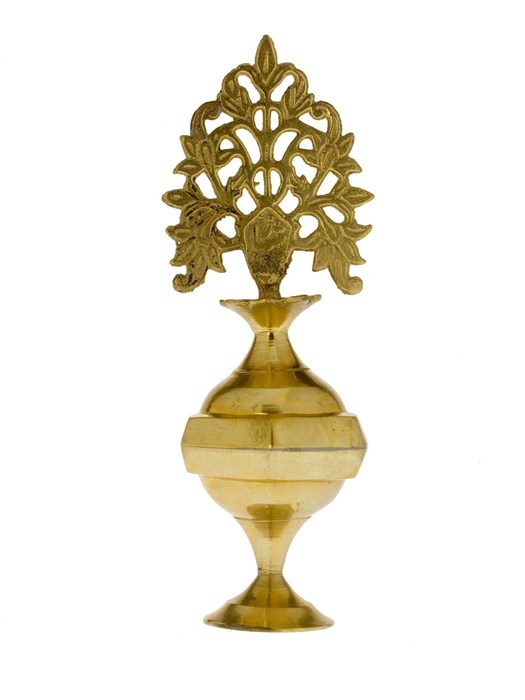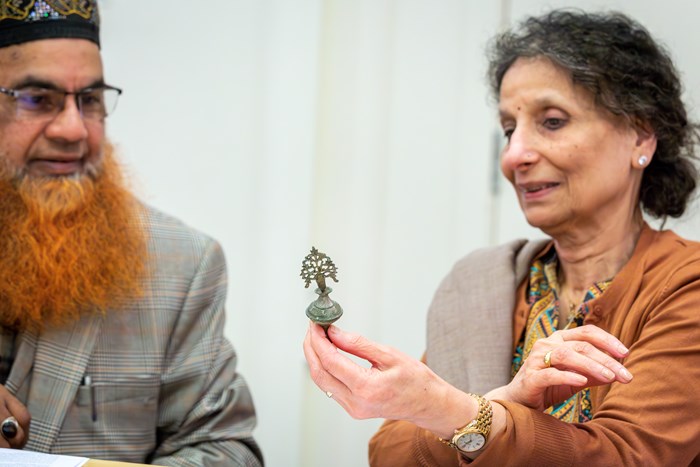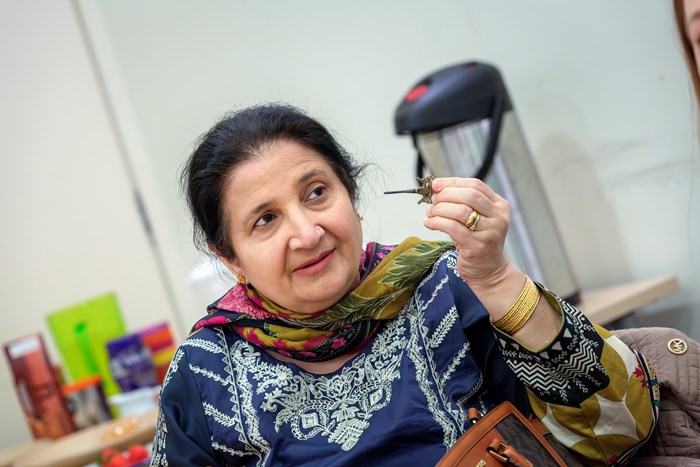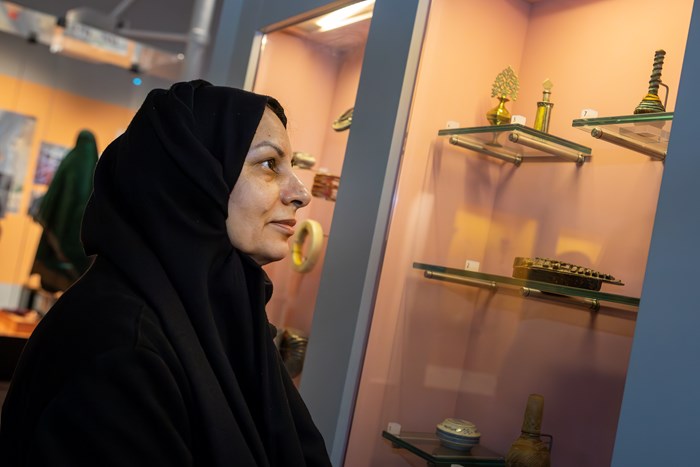Key in a search term below to search our website.
Key in a search term below to search our website.

कहानियाँ Kahaniyan of South Asia
This kohl pot can be found on Level 1 in the Patterns of Life gallery at the National Museum of Scotland.
Kohl pots have a special place in South Asian homes. Every household has them and women use them to adorn themselves. The intricate design on the top of this pot reminded us of the tree having strong roots, symbolising femininity. Although kohl has its origins in Northern Africa and West Asia, its importance is deeply rooted in South Asian culture too. Mughal era Begums (a title given to a Nawab’s wife or a Muslim woman of high rank) used to keep kohl in silver pots and wear as necklaces for a quick touch up.

Kohl pot or makhlah of brass, with elaborate openwork finial: Kuwait, made in India, 1984 (A.1985.165).

A discussion of a kohl pot brought back many memories for the group. ©ruth@rutharmstrong.com
Kohl was thought to have innumerable benefits like improving vision and strength, as well as protection from the evil eye. Therefore, it was applied to new-born babies and the custom is still practised widely today. In the past, Muslim women and men applied smoky kohl, not only for protective and religious purposes, but also to make their eyes look attractive and mysterious.

A member of NKS demonstrates how the kohl was applied. ©ruth@rutharmstrong.com
It was a family affair when we saw our grandmothers and mothers making kohl at home. It was done using a special technique, where they burned a wick made from a small piece of cotton wool or sometimes muslin cloth dipped in sandalwood paste. It was then burned and the carbon from this was collected in a bowl by placing it just over the burning flame. The soot (black flaky carbon) was then mixed with ghee, or clarified butter to transform the soot into kohl which was stored in a metal container. Kohl was applied on the eyes simply using a finger or a thin wooden needle. Kohl was especially applied around the eyes of new-born babies, brides and grooms to protect them from 'Buri Nazar' (Bad Omens).
- Group participant
In the view of many of us, this humble, beautifully handcrafted brass kohl pot depicts the versatility of craftsmen, who are now lost to history.

Looking at the kohl pots in the Patterns of Life gallery. ©ruth@rutharmstrong.com